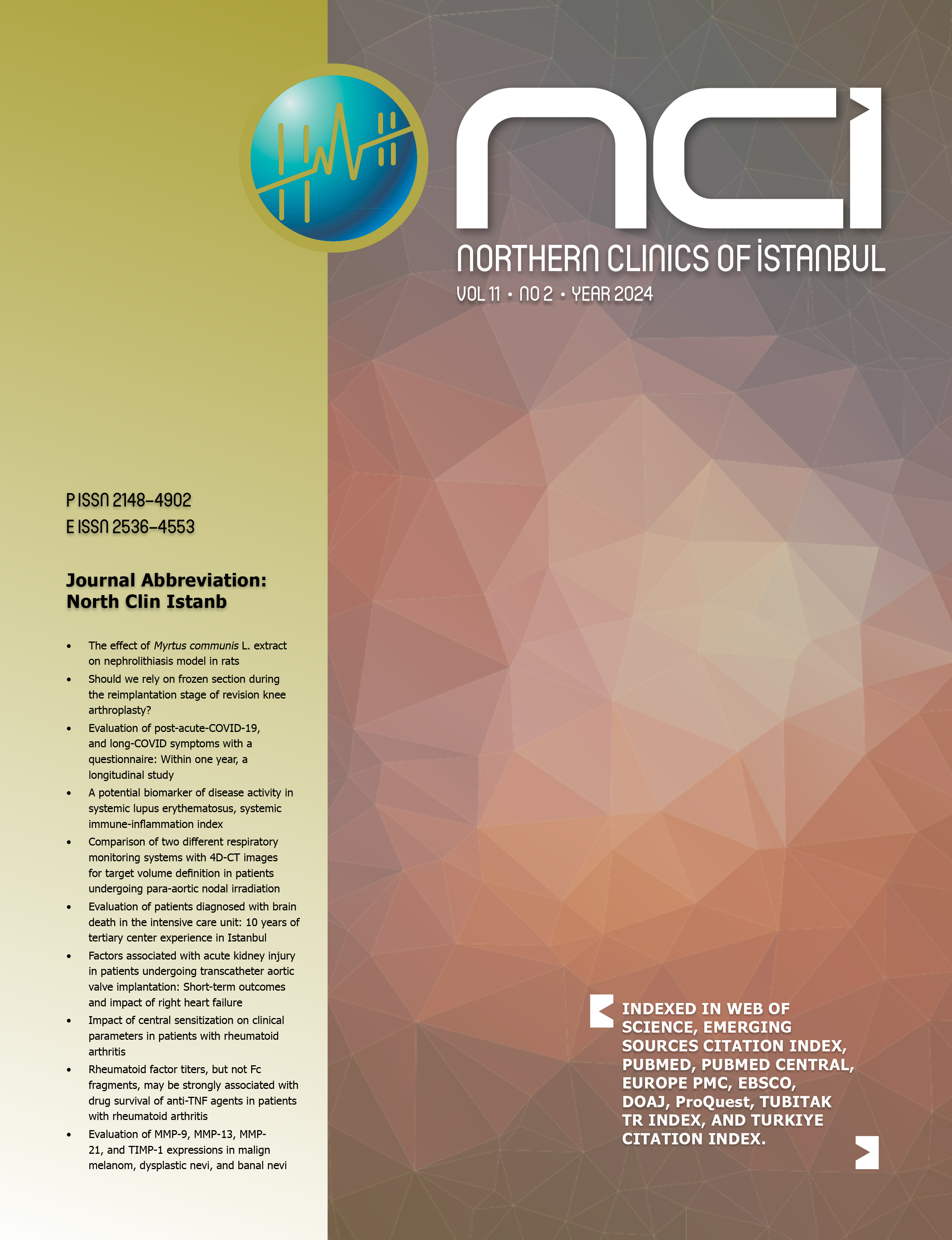Urtica dioica can regulate autophagy pathway in the rat hippocampal tissue after STZ-induced neurodegeneration
Sule Ayla1, Halil Ibrahim Saygı1, Merve Sahin1, Ebru Ciftkaya2, Aysu Kılıc3, Sadrettin Pence4, Fatemeh Bahadori5, Elif Gelenli Dolanbay1, Birsen Elibol61Department of Histology and Embryology, Faculty of Medicine, Istanbul Medeniyet University, Istanbul, Turkiye2Department of Internal Medicine, Marmara University Pendik Training and Research Hospital, Istanbul, Turkiye
3Department of Physiology, Bezmialem Vakif University Faculty of Medicine, Istanbul, Turkiye
4Department of Physiology, Istanbul Medeniyet University Faculty of Medicine, Istanbul, Turkiye
5Department of Basic Pharmaceutical Sciences, Istanbul University-Cerrahpasa, Faculty of Pharmacy, Istanbul, Turkiye
6Department of Medical Biology, Istanbul Medeniyet University Faculty of Medicine, Istanbul, Turkiye
OBJECTIVE: Autophagy plays a crucial role in neuroprotection by helping to clear toxic substances, like misfolded proteins. In neurodegeneration, autophagy is impaired leading to the accumulation of harmful proteins that disrupt neuronal function, promote inflammation, and contribute to the degeneration of brain cells. Therefore, because of its anti-inflammatory and anti-oxidative actions, the effects of Urtica dioica (UD) on the proteins of autophagy signaling pathways was studied in the hippocampus of rats with streptozotocin-(STZ) induced neurodegeneration.
METHODS: Neurodegeneration model of rats was induced by intracerebroventricular injection of STZ (3 mg/kg) to observe both cognitive deficits and autophagic dysfunction. Then, the rats in the treatment group were consumed UD at the dose of 50 mg/kg/day for 4 weeks. At the end of 4 weeks, passive avoidance test was applied for cognitive functions and hippocampal tissue of rats were investigated to determine the changes in the proteins related to autophagy by western blotting and immunofluoresecence.
RESULTS: UD treatment slightly attenuated the STZ-induced memory deficiencies in the rats. In addition, an increase in the autophagy was noted by increasing the expression of Beclin, ATG5, and LC3β proteins in the STZ-UD group compared to the STZ group.
CONCLUSION: In summary, UD may be a candidate molecule as a therapeutic strategy to protect neurons in neurodegeneration through increasing autophagy to reduce toxic protein accumulation. (NCI-2025-5-11)
Keywords: Alzheimers disease, autophagy, rat; streptozotocin; urtica dioica
Urtica dioica STZ kaynaklı nörodejenerasyondan sonra sıçan hipokampal dokusunda otofaji yolunu düzenleyebilir
Sule Ayla1, Halil Ibrahim Saygı1, Merve Sahin1, Ebru Ciftkaya2, Aysu Kılıc3, Sadrettin Pence4, Fatemeh Bahadori5, Elif Gelenli Dolanbay1, Birsen Elibol61İstanbul Medeniyet Üniversitesi Tıp Fakültesi Histoloji ve Embriyoloji Anabilim Dalı, İstanbul, Türkiye2Marmara Üniversitesi Pendik Eğitim ve Araştırma Hastanesi İç Hastalıkları Anabilim Dalı, İstanbul, Türkiye
3Bezmialem Vakıf Üniversitesi Tıp Fakültesi Fizyoloji Anabilim Dalı, İstanbul, Türkiye
4İstanbul Medeniyet Üniversitesi Tıp Fakültesi Fizyoloji Anabilim Dalı, İstanbul, Türkiye
5İstanbul Üniversitesi-Cerrahpaşa, Eczacılık Fakültesi, Temel İlaç Bilimleri Anabilim Dalı, İstanbul, Türkiye
6İstanbul Medeniyet Üniversitesi Tıp Fakültesi Tıbbi Biyoloji Anabilim Dalı, İstanbul, Türkiye
Amaç: Otofaji, yanlış katlanmış proteinler gibi toksik maddelerin temizlenmesine yardımcı olarak nöronal korumada önemli bir rol oynar. Nörodejenerasyonda, otofaji bozulur ve nöronal işlevi bozan, inflamasyonu teşvik eden ve beyin hücrelerinin dejenerasyonuna katkıda bulunan zararlı proteinlerin birikmesine yol açar. Bu nedenle, bu çalışmada, anti-inflamatuar ve anti-oksidatif etkileri nedeniyle, Urtica dioica'nın (UD) otofaji sinyal yollarında görevli proteinler üzerindeki etkileri, streptozotosin (STZ) kaynaklı nörodejenerasyona sahip sıçanların hipokampüsünde incelenmiştir.
Yöntemler: Sıçanlarda nörodejenerasyon modeli, bilişsel bozukluklar ve otofajik disfonksiyonun gözlemlenebilmesi amacıyla intrasebroventriküler yoldan STZ (3 mg/kg) enjeksiyonu ile oluşturuldu. Daha sonra tedavi grubundaki sıçanlara 4 hafta boyunca günde 50 mg/kg dozunda UD verildi. 4 haftanın sonunda, bilişsel işlevler için pasif kaçınma testi uygulandı ve sıçanların hipokampal dokusu, western blotting ve immünofloresan ile otofaji ile ilgili proteinlerdeki değişiklikleri belirlemek için incelendi.
Bulgular: UD tedavisi, sıçanlarda STZ kaynaklı hafıza eksikliklerini hafif de olsa azalttı. Ek olarak, STZ-UD grubunda STZ grubuna kıyasla Beclin, ATG5 ve LC3β proteinlerinin ekspresyonunun artmasıyla otofajide bir artış kaydedildi.
Sonuç: Sonuç olarak, bu çalışma, UDnin toksik protein birikimini azaltmak için otofajiyi artırması ve böylelikle nörodejenerasyona uğramış nöronları koruma sağlaması onu potansiyel bir terapötik aday olabileceğini düşündürmektedir.
Anahtar Kelimeler: Alzheimer hastalığı, otofaji, sıçan; streptozotosin; urtica dioica
Manuscript Language: English





















